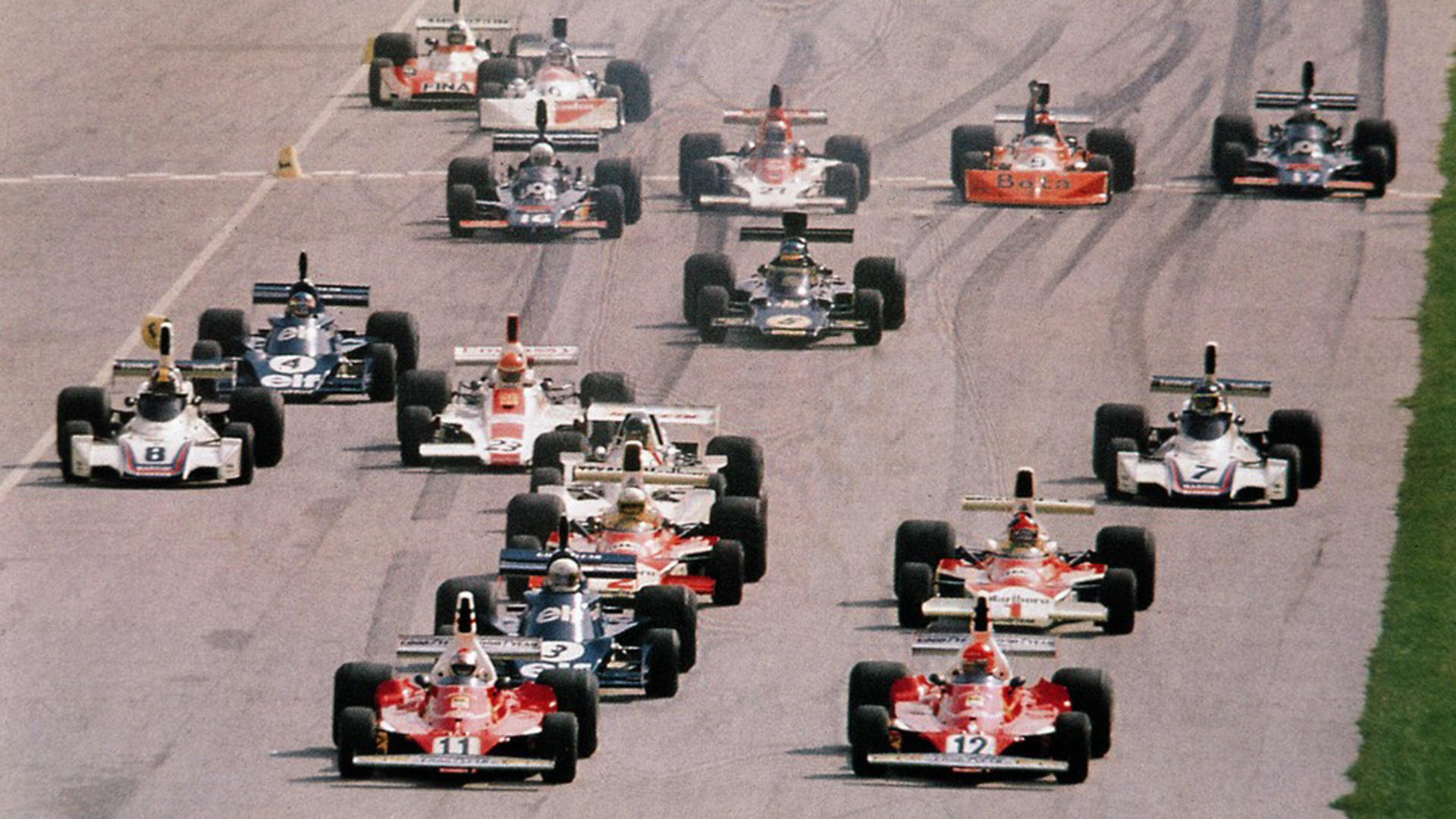






FEVER AT 50
LAUDA & FERRARI SEAL 50 WINS IN F1



FEVER AT 50
1974 was an important year for Ferrari in F1. It marked the rebirth of the racing team via a process of radical reorganisation, characterised by the arrival of a host of new names both at management level and among the team’s drivers: this marked an end to the rotation of drivers, with just two being selected for the entire season.

In addition, Ferrari made a difficult yet appropriate decision, leaving the World Sportscar Championship in order to concentrate exclusively on F1. With regard to the Technical Department, Mauro Forghieri regained full power and, with it, the freedom to propose new and innovative solutions. The team’s Team Principle was twenty-six-year-old Luca di Montezemolo, while the drivers were Clay Regazzoni, returning to Ferrari after a year spent with the BRM team, and the young Austrian, Niki Lauda, also from BRM. Indeed, it was Regazzoni who recommended Lauda to Enzo Ferrari, after witnessing him in action over the course of their shared year with BRM. According to Regazzoni, Lauda had great potential, making him preferable not only to Jean-Pierre Jarier, but also to Peter Revson and James Hunt. At any rate, Enzo Ferrari’s famed foresight and courage when it comes to choosing young talent was no less evident on this occasion. The introduction of a dedicated team of mechanics for each driver was another new development that year. Clay’s chief mechanic was Giulio Borsari, while Niki’s was Ermanno Cuoghi. The car – the 312 B3 – was a successful design: its most noticeable characteristic was the striking air intake, located directly behind the driver’s helmet, which was painted red with a white band half way up. Those colours echoed those of the flag of Niki Lauda’s home country, as well as alluding to Clay Regazzoni’s Swiss heritage… Right from the start, the 312-B3 proved highly competitive, and in its first ever race in Argentina, Lauda and Regazzoni made it onto the podium in second and third place. Regazzoni came second in Brazil, before the car’s crowning moment in Spain, at the Jarama circuit just outside Madrid. There Niki Lauda took his first Formula 1 victory, taking home a 50th win for the Scuderia Ferrari since the start of the F1 championship. Regazzoni came second, completing Ferrari’s glorious winning streak. In Jarama, Lauda reigned supreme, taking pole position and completing the fastest lap in the race. The start of the race was hit by rain, and the positions changed continually, with the wet-track specialist Ronnie Peterson taking the lead. Around halfway through, the weather changed, and a pit stop for tyre changes served to mix things up. Ferrari’s mechanics completed Lauda’s pitstop in just 35 seconds, a remarkable time for 1974.
Very quickly, the Austrian successfully regained the lead, going on to win more than 35 seconds ahead of his team-mate, who started third on the grid. Emerson Fittipaldi climbed to third place on the podium, but was a whole lap behind – indeed, only Ferrari succeeded in completing all the laps in the race. It was only the fourth GP of the season and, in the overall standings, Regazzoni was in first place, ahead of Lauda and Fittipaldi, while Ferrari was second in the Constructors’ Championship.
